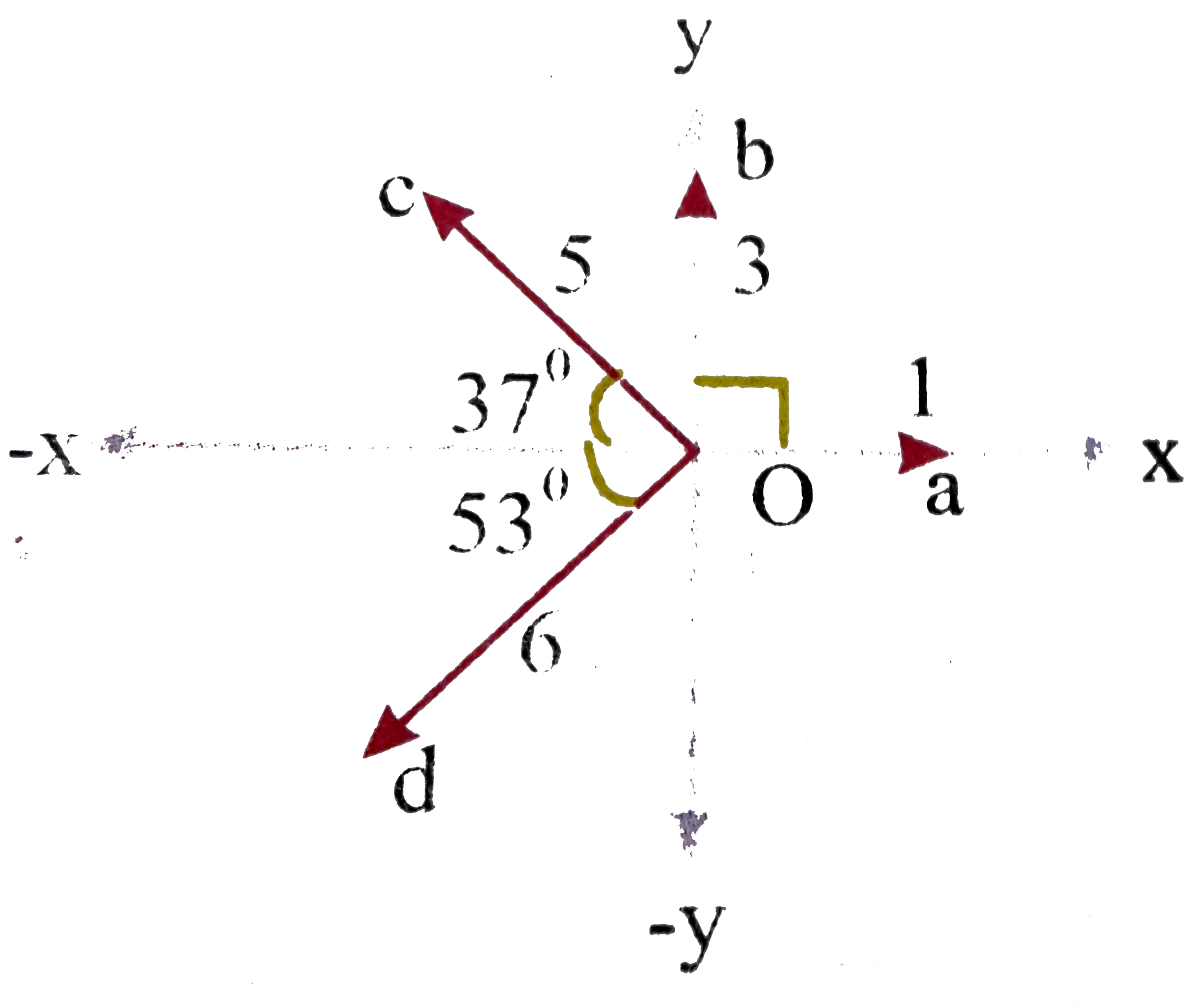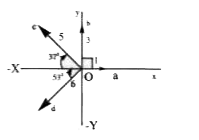Find the resultant of the vectors shown in figure.
Text Solution
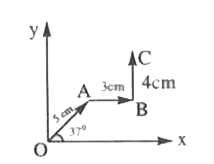
→R=−−→OA+−−→AB+−−→BC
→R=(5cos37ˆi+5sin37ˆj)+3ˆi+4ˆj
→R+4ˆi+3ˆj+3ˆi+4ˆj
→R=7i+7j,∴R=7√2cm and
α=45∘ with horizontal
|
Topper's Solved these Questions
- MOTION IN A PLANE BOOK - AAKASH SERIESCHAPTER - MOTION IN A PLANE EXERCISE - Exercise -I
91 Videos
- MOTION IN A PLANE BOOK - AAKASH SERIESCHAPTER - MOTION IN A PLANE EXERCISE - Exercise -II
135 Videos
- MECHANICAL PROPERTIES OF SOLIDSBOOK - AAKASH SERIESCHAPTER - MECHANICAL PROPERTIES OF SOLIDSEXERCISE - EXERCISE - 3
26 Videos
- MOTION IN A STRAIGHT LINEBOOK - AAKASH SERIESCHAPTER - MOTION IN A STRAIGHT LINEEXERCISE - Questions for Descriptive Answers
7 Videos
Similar Questions
Knowledge Check
Find the resultant of three vectors →OA,→OB,→OC each of magnitude r as shown in figure.
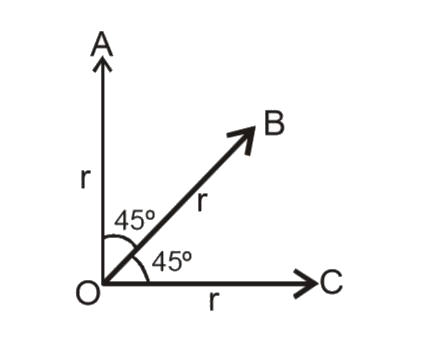 Ar(1−√2)B2r(1+√2)Cr(1+√2)D2r(1 - sqrt(2))
Ar(1−√2)B2r(1+√2)Cr(1+√2)D2r(1 - sqrt(2))
Find the resultant of the three vectors shown in figure .
 .
.
View SolutionFind the resultant of three vectors shown in the figure.
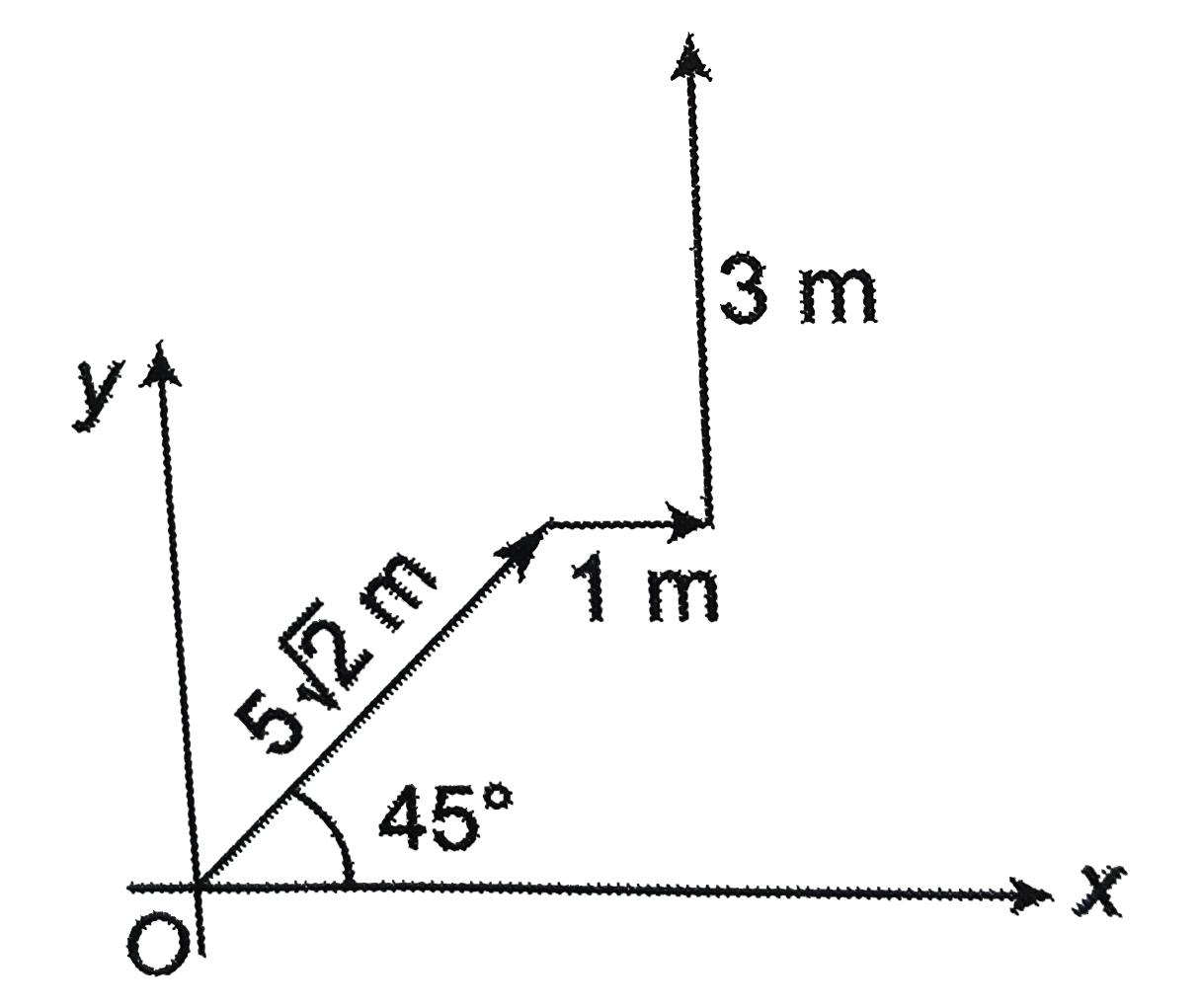
View SolutionFind the resultant of three vectors shown in the figure.

View SolutionFind the resultant of the three vectors shown in figure (2W1).
 .
.
View SolutionFind the resultant of the three vectors shown in figure (2W1).
 .
.
View SolutionFind the resultant of the three vectors →OA,→OB and →OC each of magnitude r as shown in figure?
View SolutionFind the resultant of the three vectors −−→OA,−−→OB and −−→OC shown in figure. Radius of the circle is R.

View Solution

